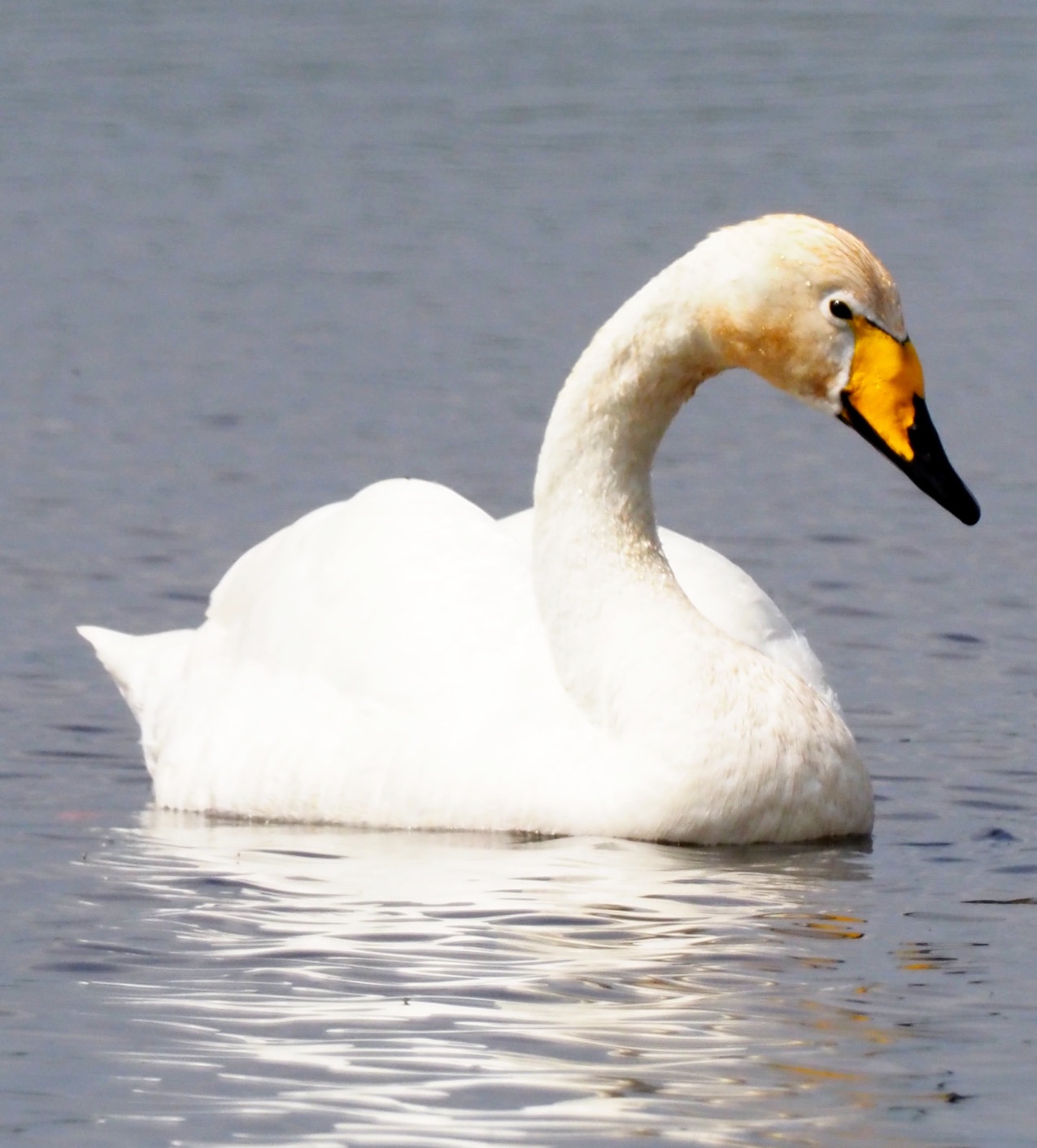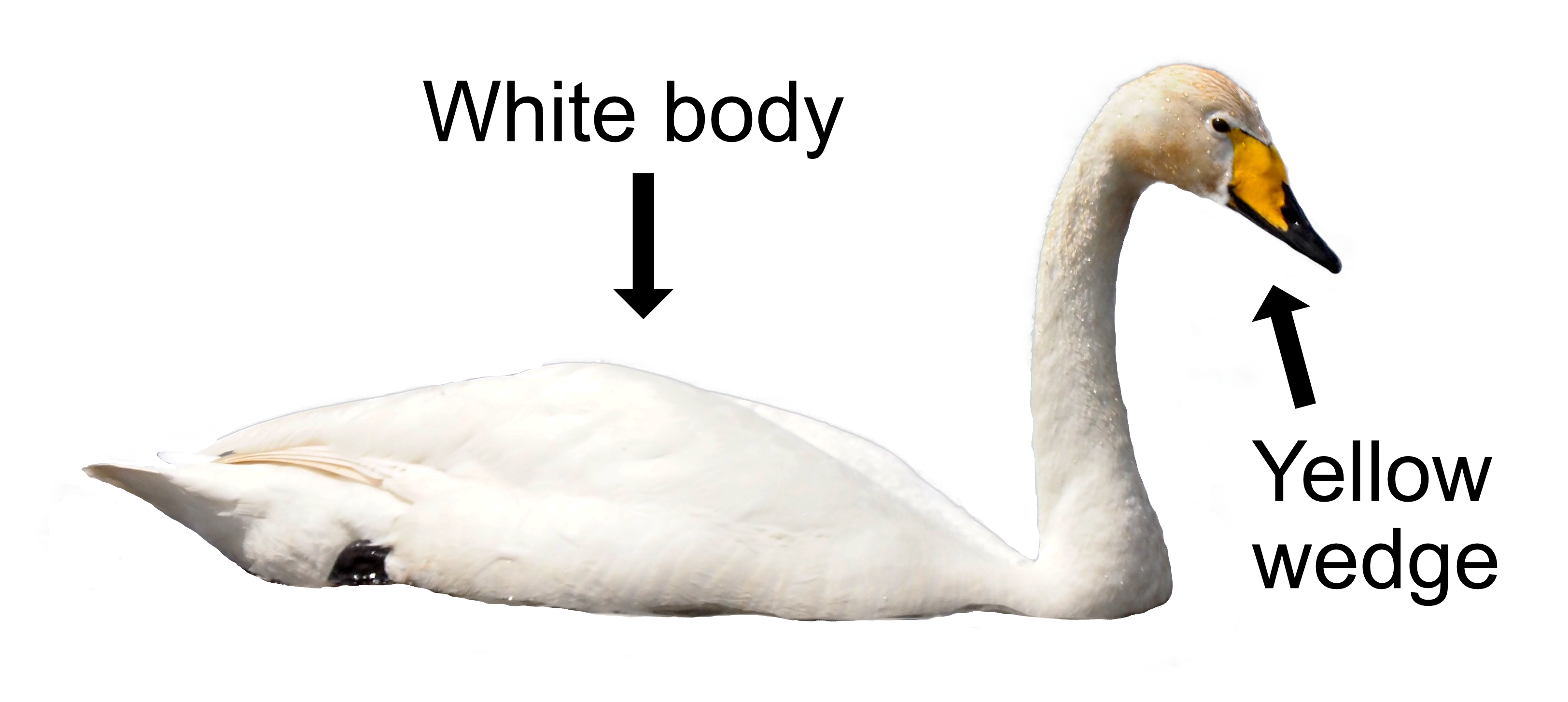
Unlike the Mute Swan (which doesn’t make a sound), the Whooper Swan lets rip with a low, usually three-note, “wup wup wup” bugle call in flight, hence its name. Despite their size, they are powerful fliers and can be found on flooded fields near water. They arrive here in the autumn from much further north. Where a Mute Swan has an orange bill, the Whooper’s is bright yellow, making them easy to tell apart.
The Whooper Swan is mainly white with sometimes rusty marks on its neck. It has a black bill with a big yellow wedge extending beyond its nostrils. It holds its neck upright when alert. Their tail is square and particularly visible when they upend to feed.

Whooper Swans are veggies, eating mainly plants found in fields and water, often forming large flocks where there is plenty of food. It is not uncommon to see twenty or more together.
Whooper Swans don’t start breeding until they are 4-5 years old. They pair for life and sing trumpeting duets when courting with lots of head bobbing. Their breeding grounds are mainly in Iceland and northern Europe, though some occasionally nest in Scotland. The nest is built from a mound of reeds on boggy ground near pools or lakes. The 3-5 eggs hatch after 35 days and the youngsters can fly 80 days later. Both parents tend the young and the family group stays and feeds together for their first winter. Like many birds, mum and dad are flightless for several weeks during their moult after breeding.
About three-quarters of the Icelandic Whooper Swans overwinter here with 15,000 staying between November and March. In the spring, they then fly non-stop from Scotland back to Iceland. During this migration, they can travel at very high altitudes. A pilot flying at 8,000 feet once reported seeing a flock of swans that were thought to be Whoopers! Whooper Swans require large areas of water to live in, especially when they are still growing because their legs can not support their body weight for a long time. The main threats to them are collisions with overhead power lines and poisoning from lead shot.
Their Latin name is ’cygnus cygnus’ where ’cygnus’ means ‘swan’. A double swan to remind you how big they are. Another swan, the Bewick Swan, looks similar to a Whooper in that it also has a yellow beak. However, in the Bewick’s, the yellow only comes halfway down and, overall, it is smaller than the big Whooper.